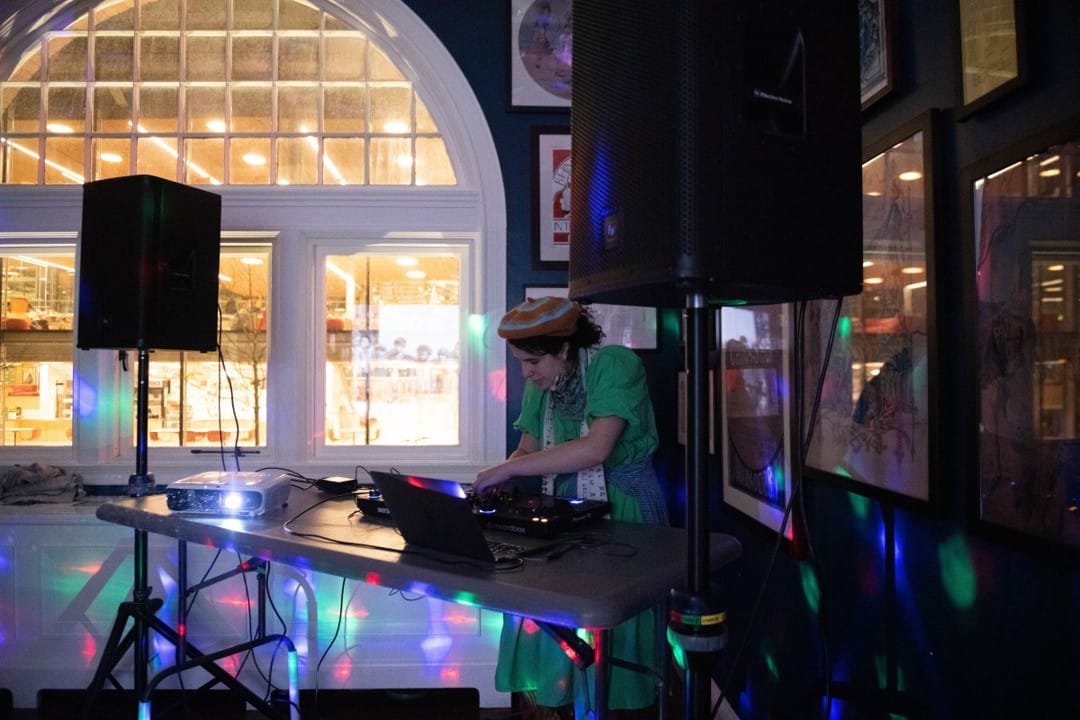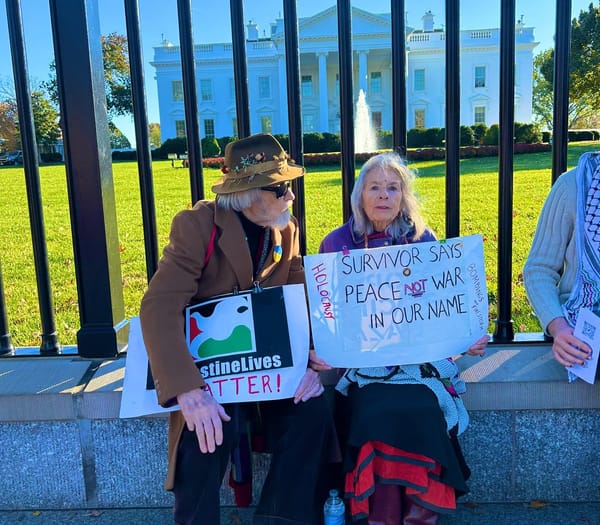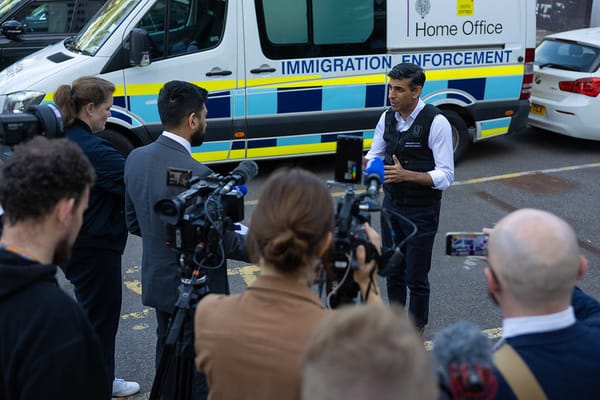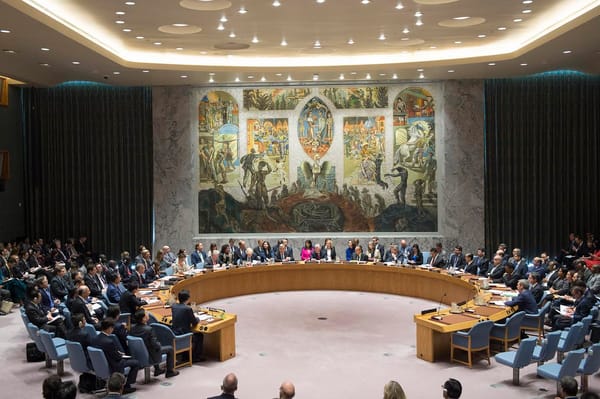Out of the wreck
Vashti meets the artist searching for alternatives to Jewish nationalism. First stop: a Yiddish rave.

Early one Friday afternoon, on the first day of summer, I was taken to an exhibition at the Carpenter Center for Visual Arts at Harvard University in Cambridge, Massachusetts. It was a large undergraduate showcase, and as I walked around, occasionally recognizing faces of people I vaguely knew, getting lost, looking for more wine and stopping briefly in colourful corners, I kept overhearing talk of a Yiddish rave.
Eventually I found it: an installation called Der Brokh, Yiddish for The Wreck. It was housed in a small, dark room that was booming with electronic music, and as I entered my body began to move to the beat. On each of the walls there were archival photographs of the lost, ragged world of European shtetls: headscarved women and children proudly standing outside threadbare homes on crowded streets; men cleansing themselves in the mikveh; boys on some adventure near a stream; Jews from Europe on boats docked outside Palestine.
On the floor there were large pillows, and a few people had taken this cue to lie down and direct their gaze to the screen above the DJ’s head. Here, more footage played, a looping film of this past Yiddishland. Then, these scenes of unremarkable shtetl life would be interrupted by shots of buildings being levelled to the ground. What should the body do now? Should it lie down and watch this destruction? Should it walk around, and quietly observe the fragments of a lost world? Or should it get lost in the music, following the clean compulsion of the beat?

We learn throughout the course of the piece that the agent of this destruction is the Israeli army. This was the ruin, The Wreck – a piece that promises to explore “Jewish experience 75 years after the establishment of the Jewish State,” and asks questions about how to live in the shadow of the devastation it has provoked. It is an installation concerned with the shattering of hopes, and an attempt to find rest amid loss and disaster.
The sign on the door warns: “[A]s we look up at The Wreck, we’re lulled by its hopelessness, the peace of failure. When a ship crashes, we fall into the sea.” The idea of water proves central to the piece, uniting the photographs of waterways from eastern Europe to Palestine-Israel with the mikveh: travel and immersion that promises redemption but could spell tragedy.
I met its creator, Chaia Berman Peters, a few days afterwards. A current undergraduate at Harvard studying sociology and music, she grew up in New York, in a family home peopled by rabbis and cantors as much as students of postcolonial thought. Her father, a Jewish studies teacher, specialises in the Zohar, and was a professor of nationalism and colonialism. Berman Peters learned to play the accordion and joined a klezmer band, but upon slowly realising that she was primarily playing for an older generation, she started to shift gears.

Der Brokh, she explains, is the second in a three-part art installation called Hofn Stantye (Yiddish for Hope Station), which brings together electronic music, live visuals and audience participation. The whole thing is a riff on her musical idol Sofia Kourtesis’ Estación Esperanza, which samples Peruvian protestors chanting against homophobic takedowns. “For me,” says Berman Peters, “Hope Station is the idea that there’s more hope in solidarity than in visions of a nation state. It’s also a sort of counter-song to Hatikva [the Israeli national anthem], which also means hope.”
Together, the three pieces meditate on Jewish nationalism and are bound together by what she calls kleztronica – a genre which, as Berman Peters puts it, “employs the liberatory techniques of Black American house and techno to create queer-anarchist Jewish rave spaces.” There’s a new home to be found, she says, “in the rave, in protest, in radical solidarity.”
Talking to Berman Peters gave me a sense of the revolutionary potential of Jewish music, balancing the complexity of our moment in a way writing so often cannot. She explained how the rhythms of house music are actually similar to klezmer; that the Jewish dance of the terkisher uses the same beat pattern as reggaeton. “Yiddish,” she says, is really “the language of house music,” the voice of the cultural underground, a language spoken by people on the margins, similar to how electronic music served Black communities in Chicago and Detroit.

Her trio of three pieces represent the past, present and future. The first part, Taitch, invites the audience to imagine a revisionist history, “a world where Jewish life in eastern Europe wasn’t destroyed by the violence of the pogroms and the Holocaust, and instead was allowed to develop its own culture in modernity,” as she expresses in her description of the project. It is a piece designed to inspire joy. In it, two guides lead the audience in traditional dances and invite them to freestyle to the music. The walls of this room show archival footage of celebrations in the shtetl, some of which Berman Peters has reworked into a video of psychedelic fragments.
The name Taitch derives from the practice of teaching Yiddish songs through repetition. “Through taitch-ing,” as Berman Peters puts it, “students transform traditional Jewish texts into their own language, understanding and culture” – a practice the installation embodies in its transformation of footage and music into contemporary visual language and sound. The piece concludes with a poem on doikayt, or hereness, leaving us with the unanswered line: “they danced in a circle and sang a song and … and …”
Following Der Brokh, the third, future-based part of the trio is still in conception. It will offer, Berman Peters promises, a “vision for a strategy of solidarity that could replace the systems of hierarchy on which Jewish nationalism currently depends.”
If The Wreck left me with longing and regret with its clear-eyed vision of our current predicament, what follows will need to offer us a ladder out from the deep, rescuing any treasures that prevail. In the interim, Berman Peters gifts us here a chance to step into a cultural underground, bringing together the world of the shtetl and the world of the rave.▼
Katie Ebner-Landy is a Junior Fellow at Harvard’s Society of Fellows, where she is on the lookout for anything and everything that resembles a Yiddish rave.




